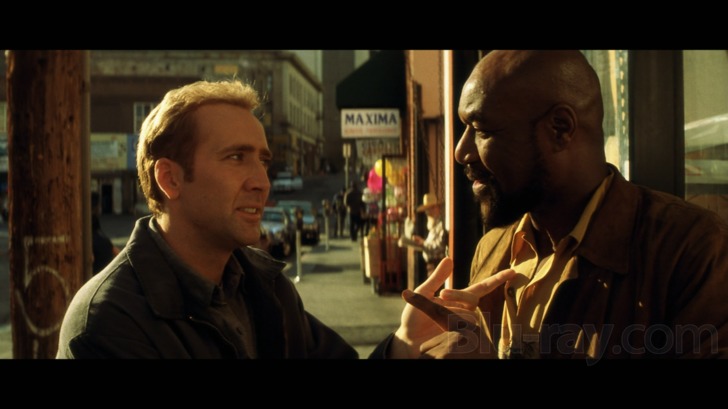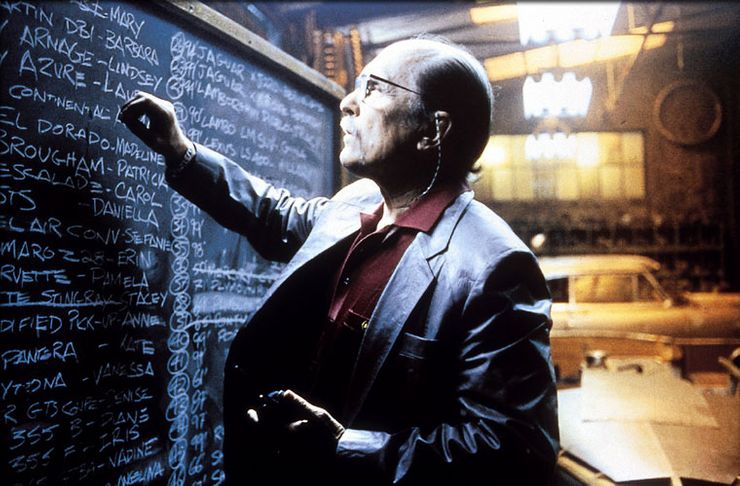I was in the southern coastal city of India for some time during the year 2000, already a Project Manager then, was working hard on a project with my team in that city. One Friday night when I came back to my Adyar apartment, some of my friends suggested that I should accompany them to watch a nice movie just released then, titled, “Gone in 60 Seconds”. I was a bit tired and thought of skipping it but when my friends (who knew me better than I would have wanted them to) told me that this movie had “Angelina Jolie” in it, I was ready in just 10 minutes. 25 Minutes later we were inside The multiplex called “Devi” near Triplicane area of Chennai, comfortably seated in our assigned seats, armed with the smuggled-in bottles of beer, in anticipation for the movie to begin.

While I watched this movie, which was not all that well made, as it could have been, I could not help but notice the amazing project management story that was unfolding right in front of me in the form of Glitz and glamor by top stars of that time namely, Nicholas Cage and Angelina Jolie, though not the best of actors. Enjoyed the movie somewhat but enjoyed the company that I had, way more than the movie itself. A few beers after that movie, in the local pub, helped me forget the movie completely.
Years later, as I started my career in project management consultancy, I got a chance to watch this movie while on flight to one of the countries where I had to consult. Suddenly all those past thoughts about the amazing lessons from this movie, came rushing in.
The Background of the Plot.
Once there was a very adept car thief, who could steal just about any car that was there in the market, called Memphis. He had a small gang of thieves and even a garage which he could use a as a chop-shop. Because of his Mother he suddenly stops stealing cars and takes a small job someplace far. His other gang members also start doing some other work. However his younger brother continues to steal cars and is rather bad at it. That younger brother ends up messing up an agreement with a very dangerous criminal mob boss. The agreement was to steal 50 specific cars to be illegally shipped to Brazil. However now with the botched up agreement there are very few days left to fulfil this agreement. This Mob boss, therefore, forces Memphis out of retirement by placing a gun to his younger brother and orders Memphis to complete the contract for him. With no way out, Memphis agrees to it and sets out to steal 50 specific cars. The only catch is that he now has only 4 days to do it. This movie is partially based on a true story.

The question that you must ask is, how many cars did Memphis stole on the very first day and so on, so that he could meet the deadline of 4th day delivery of all 50 Cars.
I usually ask this question to senior project managers around the world during consulting or training sessions, and unless they have seen the movie, I get to hear, “Well Memphis should have stolen at-least 12 to 13 cars on the very first day”.
Before I answer this, let me state the constraints and risks of this initiative.
The Constraints and Risks
-
If Memphis is unable to steal all 50 cars and deliver those to the designated spot by the end of 4th day, his entire family and he himself along with his friends would be killed.
-
If Memphis delivers damaged cars, he and everyone else that matter to him gets killed.
-
If Memphis exceeds the 4 days period then he and everyone else that matter to him gets killed.
-
If Memphis gets caught by police, he and his team go to jail and his brother and other family members get killed.
-
If a rival gang catches Memphis or his other team members, they die and so do everyone else that matter to Memphis
-
Memphis and his team has not stolen car for over a year and hence may not have the know-how of the latest car security developments
-
Severely resource constrained. Memphis cannot really go about advertising, “Need 10 car thieves with about 4 to 5 yrs of experience who know how to drive fast and also escape without damaging the car if under chase, compensation not a constraint for the right candidates”. Ha ha, I guess he just cannot. He has to just make do with the few he already knows and has.
-
What if different team members end up stealing the same kind of cars and thus creating an issue with the right numbers and kinds of cars to be stolen?
I guess you get the picture about the immense numbers of risks and constraints facing this “Project”.
Now just think again. Would Memphis steal 12 to 13 cars on the very first day? I guess not.
What Really Happens In the Movie?
Day 1: On day one Memphis tries to get his team together and ascertains how well are they still equipped to steal the cars. Connects with the owner of a garage that he used to work with earlier to ascertain if his facilities could be used as a command centre for masterminding this initiative. Does expectation setting with his customer “the dangerous mob leader” who would kill Memphis and everyone else if the project does not get done in time and that too completely. Makes a rough plan of execution. Assigns different team-leaders to decompose and detail out portions of plan given to them. A very detailed stakeholder analysis is done along with the way the individual stakeholders would be dealt with, in details. Calls it a day to have a beer.
Numbers of Cars Stolen = 0.

Day 2: On day two Memphis and his team identify the location of each of the 50 cars. Review the plans made by each of the team leaders and approve some plans while punching holes and gaps in other plans. Another round is done to close those gaps. A complete and detailed Risks management plan is done and a project manager is appointed. The Garage owner becomes the project manager and the most technical person, viz., Memphis becomes just another project team member. A decoy is planned up to ensure that police does not follow them to their real work. Creates a very daring and a serious fall-back plan. Detailed plan is discussed and acute responsibility are set. Pains are being taken to ensure that none of the team members have any kind of overlapping responsibility with anyone else. Expectations and responsibilities are double checked. A team building exercise is done. Serious conflicts are resolved among team members and buy-in is created for proper co-ordination. A new problem surfaces and the plan is altered to work around that problem.
Numbers of cars stolen = 0

Day 3: The project manager (the garage owner) takes control of the plan. Creates a detailed schedule and assigns tasks and even regions to ensure that none of the team members run into each other during execution. Communication plan is very clearly explained and ensures that every one of the team members agrees to abide by it. The failover plan is put under a dry run, results recorded and approved for execution if the need arises. The project manager holds a “Kick-Off Meeting” with the team members and the project execution finally starts.
Despite plan, some issues are faced but because of communication plan and co-ordination with the project manager, those issues are overcome and the project execution gets back closer to the plan.
The project manager conducts timely status, progress and forecast of the project health to ensure how much speed needs to be increased and how much of the buffer time has been utilized. This information is sent to everyone to keep all team members suitably informed.
Numbers of Cars Stolen = 23

Day 4: The execution is in full swing. The project manager and the project team take a short break to rest themselves. Rework part of the plan to accommodate some new developments. Relook at the stakeholder analysis and reprioritize some stakeholders and change their approach towards them. Risk responses are executed and some responses work while others do not give the necessary results. Some of the team members violate the communication and project plan and end up messing up some of their work rather badly. The project manager realizes that this puts the plan at the risk of not getting completed. The failover plan is now executed and becomes partially successful. The project execution again ends up matching the plan. Variances are less. And finally the project is completed in time.
Numbers of cars stolen = 50

Off course there was a lot of drama and action and glitz that coated this project narration that I just wrote, in the movie. But peeling through that glamor and drama and slick effects, the real saviour of the day was not fancy technology or glib talk or even fast cars, but plain and simple practical project management.
The Amazing Project Management Lessons From This Movie
-
The tougher the situation of the project, the more stringent the project deadline, the better and more granular the planning process must be.
-
When there is just not enough time to fail, the only way to ensure that you do not fail is by conducting serious and detailed risks management and assumptions analysis.
-
The most “Technical” person would not necessarily make a great project manager.
-
A project manager must have the project justification and objective clearly in view while making the project plan.
-
A project plan must never be made alone.
-
Stakeholder analysis is indispensable irrespective of the size and complexity of the project.
-
The tougher the project and the tougher the timelines of the project, the more comprehensive the communication plan.
-
Roles and responsibilities must always be very clear and precise and if possible measurable.
-
The project manager must always compare actuals with plan and keep altering the plan based on new development.
-
The better the risk management the more resilient the project.
-
None of the projects have all the resources nor the perfect resources. Resource constraints are a fact of life.
-
Never go by the face value of the stakeholders. Some stakeholders have hidden agenda and one must try and be aware of it as far as possible.
-
Some stakeholders may have a negative attitude towards the project as well as may have a perception that the project may affect them negatively.
-
Firefighting is not the best way to conduct project but may be needed and they should be as few and far in between as possible.
-
We win as a team and we loose as a team.
-
No matter how tight the project deadline, team must rest and avoid overwork to be fighting fit to finish the project in time without too many mistakes.
If you look around, some of the best and seemingly impossible projects, happened purely because of planning and not because of heroic work. Heroic work helps, but is most important is planning and practical project management.
I am sure none of your projects have had such a stringent time line and “Consequences” as Memphis faced in this above “other-side-of-the-law” project. Therefore the real question that you need to ask yourself, what is really stopping you from conducting a detailed and practical planning process for your projects?
Disclaimer:
The images, title and the story are taken from the Hollywood movie titled “Gone in 60 Seconds”, and it has all been used here only for educational purposes.
=============================================================================================================================